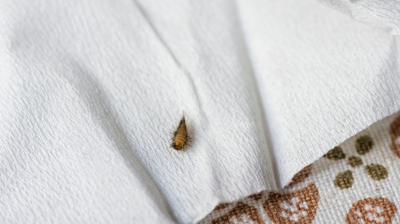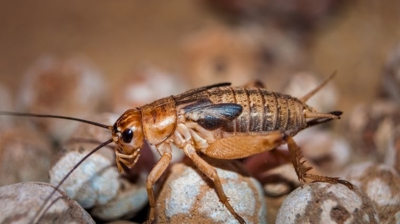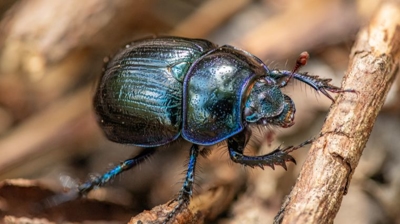
Boxelder Bugs
Boxelder bugs, scientifically known as Boisea trivittata, are a common insect species in North America, particularly in the United States and Canada. They belong to the family Rhopalidae and are often referred to as "maple bugs" or "boxelder beetles" due to their preference for feeding on the seeds of boxelder (Acer negundo) and other maple tree species. Here is a comprehensive overview of boxelder bugs:
Physical Characteristics: Boxelder bugs are relatively small insects, typically measuring about 1/2 inch (12.5 mm) in length. They have an elongated, oval-shaped body with distinctive black and orange-red markings. Their coloration serves as a warning to potential predators, as they release a foul-smelling odor when threatened. Adult boxelder bugs have fully developed wings and can fly.
Habitat: These bugs are primarily found in North America, where they are native. They thrive in areas with boxelder, maple, and ash trees, as these are their preferred host plants. They are commonly found in residential areas, parks, and wooded regions. During the warm months, they inhabit trees, where they feed and reproduce. As the weather turns colder, they seek shelter in structures like houses to overwinter.
Life Cycle: Boxelder bugs undergo incomplete metamorphosis, consisting of three stages: egg, nymph, and adult. They lay clusters of small, red eggs on the leaves, bark, or crevices of host trees. Nymphs hatch from these eggs and resemble smaller, wingless versions of the adults. They undergo several molts, gradually increasing in size and developing wings. Boxelder bugs typically have one generation per year.
Diet: Boxelder bugs are herbivorous and primarily feed on the sap and seeds of boxelder and other maple trees. They use their piercing-sucking mouthparts to extract plant juices, which can sometimes cause damage to host trees. However, their feeding is generally not harmful enough to seriously harm the trees.
Behavior: During the summer, boxelder bugs are active and congregate on the host trees, where they feed, mate, and lay eggs. As temperatures drop in the fall, they start seeking shelter in protected areas like cracks and crevices in buildings. Large numbers of boxelder bugs can often be found sunning themselves on the sides of houses, which can be a nuisance to homeowners.
Overwintering: In colder climates, boxelder bugs enter a state of diapause during the winter, reducing their metabolic activity and seeking refuge in warm indoor locations. This behavior often leads them to invade homes, garages, and other structures in search of warmth.
Control and Management: Controlling boxelder bugs can be challenging. Prevention involves sealing cracks, gaps, and openings in buildings to prevent their entry. Chemical pesticides can be used, but they are often more effective when applied by professionals. Vacuuming and removing boxelder bugs from indoor spaces is also a common method of control.
Impact: While boxelder bugs are generally not harmful to humans or pets, they can be a nuisance when they invade homes in large numbers. Their presence indoors can be unsettling, and their foul-smelling defensive secretion can stain fabrics and surfaces.
Boxelder bugs are common insects in North America known for their distinctive appearance and behavior. Understanding their life cycle, habitat preferences, and control methods can help homeowners effectively manage and prevent infestations, ensuring a more comfortable living environment.
Black And Red Bugs
Boxelder bugs (Boisea trivittata) typically display a distinctive coloration featuring black and orange-red markings. The main colors associated with boxelder bugs are black and bright red-orange. Their body is primarily black, with prominent red-orange markings on their wings and along the edges of their abdomen. These colors serve as a warning to potential predators and are characteristic of adult boxelder bugs. However, the exact coloration may vary slightly among individual bugs. Young nymphs of boxelder bugs, especially early instars, may have a slightly different appearance, with a more reddish hue on their bodies as they develop.
Boxelder Bug Infestations
Boxelder bug infestations can be a nuisance, especially when these insects invade homes or other structures in large numbers:
Causes of Boxelder Bug Infestations:
- Seasonal Behavior: Boxelder bugs tend to become more problematic during the fall and winter. As the weather cools down, they seek shelter to overwinter in protected locations, including residential buildings.
- Host Trees: Infestations often originate from the presence of boxelder, maple, or ash trees near the infested structure. These trees serve as the primary food source and habitat for boxelder bugs.
Signs of Boxelder Bug Infestations:
- Swarming: One of the most noticeable signs is the sudden appearance of large numbers of boxelder bugs around windows, doors, and the exterior of buildings. They may cluster in sunny areas to bask in the warmth.
- Indoor Presence: Boxelder bugs will enter buildings through cracks, gaps, and openings in search of warmth. You may find them indoors on windowsills, walls, curtains, or other surfaces, especially on sunny winter days.
- Foul Odor: When disturbed or crushed, boxelder bugs release a foul-smelling substance that can stain surfaces and emit an unpleasant odor.
- Damage: While not harmful to humans or pets, the presence of boxelder bugs indoors can be a nuisance. Their excrement may also leave small stains on surfaces.
Management and Control of Boxelder Bug Infestations:
- Sealing Entry Points: To prevent infestations, seal all potential entry points, including cracks in walls, gaps around windows and doors, and openings in screens and vents.
- Physical Removal: Use a vacuum cleaner to safely remove boxelder bugs from indoor spaces. Empty the vacuum bag or canister immediately to prevent them from escaping.
- Insecticides: Chemical insecticides can be used as a last resort, but they are often more effective when applied by pest control professionals. They may treat the exterior of buildings and potential entry points.
- Tree Management: Reducing the number of host trees near your property or applying insecticides to these trees can help minimize the source of the infestation.
- Professional Pest Control: If infestations persist or are severe, it's advisable to consult with a pest control expert who can provide tailored solutions and treatments.
- Preventative Measures: Consider taking preventative measures in late summer or early fall before boxelder bugs seek shelter indoors. This may involve sealing cracks, inspecting and repairing screens, and removing any bugs found indoors promptly.
Boxelder bug infestations are often associated with the cooler seasons when these insects seek shelter indoors. Recognizing the signs and taking proactive steps to prevent their entry can help homeowners effectively manage and mitigate infestations, ensuring a more comfortable living environment.
Boxelder Bug Life Cycle
The life cycle of boxelder bugs (Boisea trivittata) is relatively simple and follows incomplete metamorphosis, consisting of three main stages: egg, nymph, and adult. Here is a detailed overview of the life cycle of boxelder bugs:
Boxelder Bug Eggs
The boxelder bug life cycle typically begins in late spring or early summer when adult females lay clusters of small, reddish-brown eggs. These eggs are usually laid on the bark, leaves, or in crevices of their host trees, which are primarily boxelder (Acer negundo) trees but can also include other maple and ash species.
Each egg cluster can contain anywhere from a dozen to several dozen eggs.
The eggs typically take about one to two weeks to hatch, depending on temperature and environmental conditions.
Boxelder Bug Nymphs
When the eggs hatch, nymphs emerge. Nymphs are the immature stages of boxelder bugs and undergo several molts as they grow and develop.
Nymphs initially appear bright red-orange and are wingless. As they mature through five instar stages, they gradually darken in color and develop wing pads.
Nymphs are relatively small and resemble smaller versions of the adult boxelder bugs.
The nymphal stage lasts for several weeks, during which time they feed on the sap and seeds of host trees.

Frequently Asked Questions About Boxelder Bugs
What do boxelder bugs eat?
Boxelder bugs primarily eat the sap of boxelder, maple, and ash trees.
Learn more: What Do Boxelder Bugs Eat?
Do boxelder bugs bite?
Boxelder bugs only rarely bite humans.
Learn more: Do Boxelder Bugs Bite?

Hear From Our Happy Customers
-
"Professional & Considerate"
I’m pleased with Miche services. Jarvis came today. Professional and considerate. Thank you!
- Judy B. -
"Fantastic & Patient"
Jarvis was fantastic and patient. He answered my questions with an in-depth explanation and addressed all of my areas of concern. Would love for him to be my assigned tech going forward. Well done!
- Yonnette M. -
"Great Communication"
Tech was on time, communication was great, and he accommodated my needs.
- Alonzo W. -
"Wonderful Service"
Wonderful service. Jarvis is great. Took care of everything I needed. Thank you!
- Henry P. -
"Exceeds Expectations"
I can’t say enough positive things about this company... The tech that came out, Jarvis went above and beyond my expectations. Thank you guys, I will continue using your services.
- Jake M. -
"Very Knowledgeable"
The tech that arrived was courteous, professional, and very knowledgeable. He was Great.
- Uerial I.



